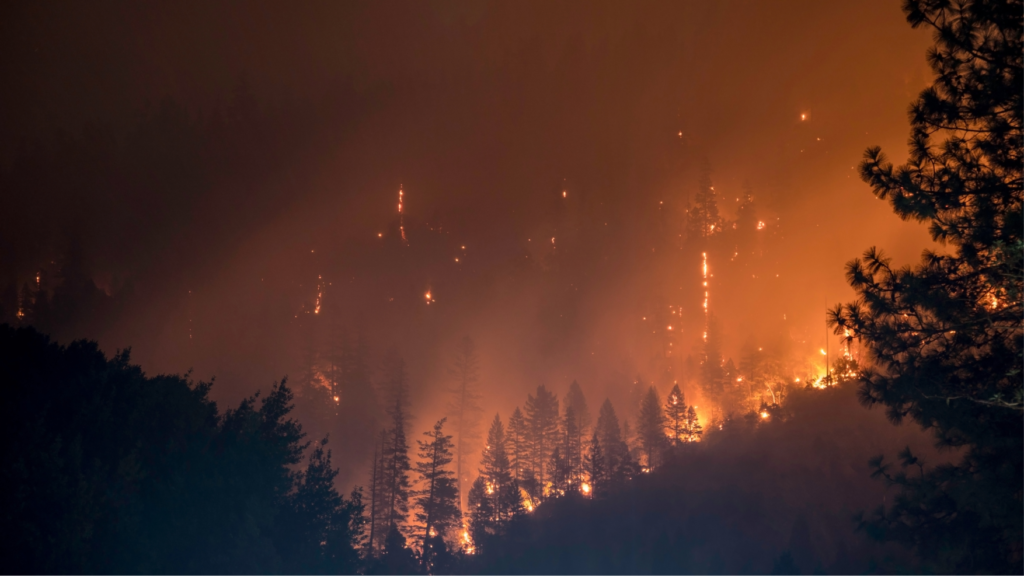Working with wildfires
How the HVAC industry can become the hero of wildfire season
With unprecedented droughts and wildfire season already well underway in many states, it's never been more crucial to consider the impact of wildfire smoke on your customers' Indoor Air Quality at home. Let's take a look at how HVAC can help in wildfire season, the effects of wildfire smoke on IAQ, and the steps you can take to keep your customers safe in their homes until the smoke subsides...
As of June, the 2023 wildfire season is already the worst since 1995.
Why is wildfire smoke dangerous to health?
Wood smoke can linger in the body for 40 times longer than tobacco smoke, increasing the risk of developing cancer or a respiratory illness¹. As wildfires and forest fires get worse each year, the long-term effects on human health will escalate over time. This becomes a double-whammy of prolonged exposure over each individual event, and repeated exposure over each year, combining to jeopardize the health of your customers and their families in the very place they should be safest. Those with asthma are particularly susceptible to the health risks of inhaling Particulate Matter (PM) such as fire smoke — and given that 13% of Americans suffer from asthma² the chances are that some of your customers fall into this vulnerable category.
Air pollution from wildfires have a 10x greater impact on health than similar pollution levels from other sources.
How HVAC can help in wildfire season
The majority of wildfire smoke exposure occurs while we are inside, despite the visible effects often remaining outside the home. Leaky home syndrome and negative air pressure can contribute to smoke infiltration into a home, which is why we believe that HVAC pros are best placed to assess and advise on IAQ issues for their customers (we'd like to see a counter-top monitor factor in a building envelope!). Once inside, smoke particles linger longer and settle into soft furnishings, carpeting and rugs, posing a fresh risk each time these surfaces are disturbed by everyday activities or vacuuming without a HEPA filter — meaning that all those health risks we just covered don't disappear when the smoke clears.
Installing a high MERV filter (13 or above) is the simplest step to ensure that smoke particles are captured — but without airflow, even the best filter is ineffective. Here's where HAVEN comes in...
How can HAVEN help with managing wildfire smoke?
- Our duct-mounted Central Air Monitor tracks Particulate Matter levels across the entire home: whereas your average counter-top monitor would only alert spikes within its immediate environment, the HAVEN Monitor will pick up on the presence of wildfire smoke whether it's from one broken window seal or a wider building envelope issue.
- The NEW Central Air Controller adds smart capability to existing equipment: we recommend wiring it to the air handler, and setting the automations to toggle the blower fan when high Particle levels are detected. This ensures that airflow is activated when needed, so the filter can effectively capture harmful smoke particles.
- The HAVEN Pro Web Portal logs and displays crucial customer IAQ data to help you identify spikes or trends over time, giving you the evidence you need to back up further equipment solutions like a media air filter to ensure your customer's home isn't compromising their health through the smoky season.
Since many mechanical ventilation solutions rely on intake of outdoor air, it's also crucial that this equipment is deactivated during fire smoke events in order to minimize the risk of PM being drawn into the building. With IFTTT integration, HAVEN can also automate these shut-downs in response to PM spikes! Click here to learn more about our IFTTT integrations.
Find out more about how HAVEN can help level-up your IAQ strategy and protect your customers' health:
HAVEN™ For Wildfire Season Read More »



